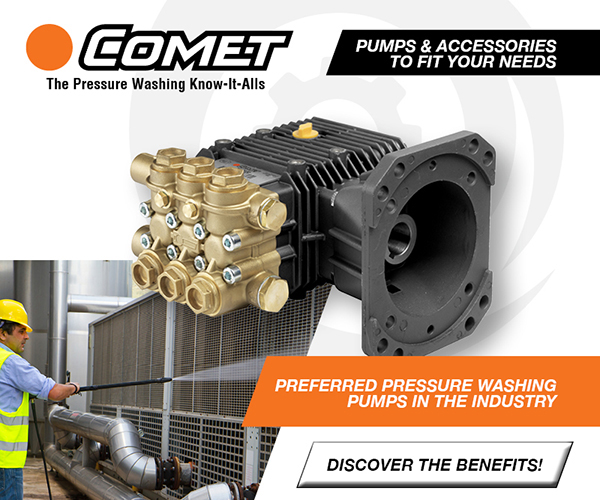
Determining Your Product Line: An Integral Part of Your Business Plan
By Diane M. Calabrese / Published August 2015

C
ompany Trajectory
Separating the flash in a pan or one-time wonder from what will endure takes awareness, knowledge, and at least some luck. It’s not easy. Just as some flashes of powder in a pan of flintlock were effectual, some one-time successes persist long enough to gain a huge following and market share. Recall the hula hoop.
Determining what should and should not be part of a product line is an integral part of a business plan. The word product, derived from Latin, carries the meaning of leading forward (from produce). And products ultimately do determine the trajectory of a company.
As part of a business plan, a periodic survey of products allows for determining whether a product should be retained or jettisoned. Feedback from end users or distributors can be valuable.
For existing products, a look at the movement of a product is a good place to start. “We review the market for the product by reviewing inquiries and requests from prospective customers,” says Ron W. Robarge, P.E., director of engineering at Spartan Manufacturing Corporation, which does business as Pressure Power Systems from its headquarters in Kernersville, NC.
If a customer suggests that a product be added, there is also an evaluation to be made. “We review the overall market,” says Robarge, adding that the process is very similar to the one used for existing products.
The regions and industries a manufacturer or distributor serve stand as other parameters when making a decision. A distributor serving the marine industry along the U.S. Gulf Coast gets many requests for products that are quite different from a distributor serving the agricultural community in the Upper Midwest and vice versa.
Whims are probably the greatest source of pain in adding products. And businesses are especially susceptible to taking a short path to market when things are going well. The good feeling that derives from the combination of healthy cash flow and profit can reduce the scrutiny given to a new product line.
For example, if contractors start complaining to distributors about black flies or mosquitoes at job sites, the possibility of carrying some insect repellent might seem reasonable. But the need for repellent is seasonal. Then, there’s the requirement of storage, ordering, and getting the word out that the repellent is available. And does a distributor really want a contractor to stop in for repellent and find that a reorder due at 8:00 a.m. will not arrive until noon?
Focus preempts fancy (as in flights of, some good and some not) when the development of a product line is in question. The focus may be on solving a particular problem in the industry. Or, the focus may be on solving a particular problem in a new way. In either case, customers know what they need.
Focus On A Problem
Meeting one customer’s need or one industry’s need has a way of illuminating opportunities for serving related customers and industries. Moreover, it’s not just about adding, but it can also be about refining a product in a way that will give the customer exactly what’s wanted.
“The common feature shared by all of our products is to offer a solution for problems caused by scale buildup due to hard water,” says Rob Zimmerman, general manager at Scaltrol, Inc. in Suwanee, GA. “Our product line started out with three systems designed primarily to protect restaurant equipment in the foodservice industry—warewashing, booster heaters, ice machines, steamers, etc—from the effects of scale buildup caused by hard water.”
Because more than restaurant equipment requires a solution to scale buildup due to hard water, the initial focus grew. “Our markets expanded into other industries such as pressure washers, medical equipment, water heaters, laundry equipment, and residential as a solution to problems caused by hard water,” says Zimmerman.
And the focus grew wider again. “We added two additional systems at the request of several customers for applications requiring higher water temperatures and higher pressures,” explains Zimmerman.
Although the focus of Zimmerman’s company grew to encompass more industries and to meet customer requests for specific applications, the center point did not change. The additions to the product line were made because they were a good fit with the core model of the business.
“We decided to make these additions to our product line because they utilized the basic design of our product and only required a change to the compound used to make the housing for the system,” explains Zimmerman. The key is that the reconfiguration required was quite manageable. “While the market for these additional items is smaller, there was not a substantial cost in redesigning the system.”
Still, new product lines are considered and evaluated. “We are currently testing a new product line designed to solve problems associated with the corrosive effect of water on equipment applications,” says Zimmerman. “While this is a different type of problem, we will be able to use our existing, patented delivery system and just make changes to the compound in our cartridges.”
Meet A Broad Market Interest
Regulations on the use of water, chemicals, and emissions are many. They are also increasing. Across U.S. industries and commerce, the objective of using as little water and as few chemicals as possible—or doing more with less—is coupled with the goal of collecting and recycling water and decreasing emissions to as close to nil as possible.
Consequently, there is among end users a real desire for products that help them meet or exceed requirements set by environmental monitors at all levels of government. Call it a broad market interest.
“Approximately six years ago, we made a decision to remove all phosphates from our formulas,” says Scott Harmsen, director of business development at Hydro-Chem Sys-tems, Inc. in Grand Rapids, MI. In fact, the common features of all the products on the company’s roster are that they are formulated without phosphates, are biodegradable, and are original formulas. The decision to manufacture only phosphate-free products fit the philosophy of Harmsen’s company. It was forward looking and focused.
“We desire to lead our industry by recognizing important trends—and then develop products that raise the bar,” says Harmsen. “The market was starting to place importance on the environmental impact of phosphate’s role in promoting plant growth, which actually makes it a dangerous pollutant when dumped in excessive quantities into aquatic ecosystems.”
Phosphate-boosting aquatic plant growth is one of the too-much-of-a-good-thing scenarios that often attach to chemicals. Finding the right balance—one that does not throw ecosystems out of equilibrium—while maintaining economic activity is something that everyone in industry and commerce wants to do.
As such, the decision at Harmsen’s company not only meets a broad market interest, but it becomes an example to share: It can be done. Indeed, whenever product lines are developed or adjusted, there is a great deal of comparing and measuring. It’s not unusual for one manufacturer to look at the results of another and declare that if it can be done there, it can be done here. Perhaps it can even be done better. That’s the essence of product development—the going forward—that carries us to the future.
Asking The Right Questions
Successful manufacturers and distributors always include the customer as the main factor in any evaluative equation. “Does the product provide greater value and solutions for our customers?” says Harmsen. That’s the question that must be asked when deciding what stays and what goes.
“The answer to that question will ultimately determine if the product is retained, reformulated, or made obsolete by a new product that further raises the bar,” says Harmsen. The input to the answer comes from both qualitative and quantitative data.
“R&D is an important means for achieving future growth and maintaining a relevant product in the market,” says Harmsen. “An analysis on whether or not there is an opportunity to exploit will provide insight on using resources for innovation.”
There are two fundamental questions to ask, says Harmsen. “Will this product be made specifically for one customer, or is there a bigger market to go after? What kind of potential for volume exists with the customer, and is there a greater market?”
It’s not out of the ordinary that one customer may have a need for so much product that meeting the need could make sense. Many manufacturers make products for the U.S. Department of Defense that would fit in the one customer with high volume category.
Of course, a contract buyer like the government can switch suppliers, so there is a risk. Throughout our industry, though, both the high volume to select customer model and the moderate volume to each of many customers model are in play. Deciding which kind of product roster to maintain—or deciding to do a little of both—is another dimension of developing a product line.
Whichever path is taken, there is an old and simple bit of advice that applies to products: Make or sell a product you believe in. That’s the strongest endorsement.





